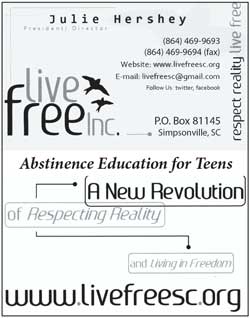A recent article in the SC Daily Gazette about South Carolina’s Working Farmland Protection Fund inspired me to take a closer look at what Greenville County can do to protect our own farmland. The story highlighted how the state is helping farmers keep their land in production rather than selling to developers, a model that makes sense for a fast-growing county like ours.
After visiting farms across Greenville County over the past few weeks, from Happy Cow Creamery in the south to Famoda Farm in the north, I’ve seen firsthand the dedication, innovation, and grit that define our agricultural community. These visits reinforced what I already knew: we have something worth protecting, and we have a County Council that I believe is ready to get serious about joining these preservation efforts in the coming year.
Read the article that inspired this section
What the State is Doing
South Carolina has laid a strong foundation for farmland protection:
- The SC Conservation Bank has preserved more than 360,000 acres statewide since 2002.
- The Working Farmland Protection Fund, launched with more than $12 million, helps farmers place conservation easements on their land, ensuring it remains farmland forever.
- The program prioritizes family-run and underserved farms, as well as land under heavy development pressure.
That program works, and Greenville County can absolutely plug into it.
What Greenville County Can Do
There are practical, common-sense steps we can take to protect farmland while respecting private property rights and encouraging responsible growth:
- Ease Unnecessary Regulations on Farmers
Many farms already have natural stormwater systems built into the landscape, tree lines, pastures, and natural slopes that filter water better than engineered basins. Yet, we often add expensive and redundant requirements that don’t fit the realities of farming. - It’s ironic that government will regulate a farmer for potential nitrate runoff from a barn roof or structure, yet doesn’t regulate its own runoff from county roads flowing into the same creeks. I believe that we can protect the environment without punishing responsible land stewards.
- Support Easements and Incentives
Partner with the SC Conservation Bank and local land trusts to fund farmland easements, offering matching grants or property-tax credits to landowners who preserve their acreage. - Balance Growth and Preservation
Explore transfer of development rights (TDR) programs that allow farmers to sell development credits to builders in designated growth areas, keeping rural land open while guiding density where it belongs. - Plan Ahead
Integrate farmland protection into the County’s long-range land-use plans, identifying agricultural corridors before development reaches them. - Work With the State
Help Greenville’s farmers access resources like the Working Farmland Protection Fund, ensuring they’re part of the statewide effort to preserve working land.
Local Partners in Preservation
We’re not starting from scratch. Greenville already has strong agricultural organizations leading the way:
- The Greenville County Farm Bureau continues to be one of our strongest advocates for local agriculture, providing both policy leadership and practical support for farmers.
- Our local FFA chapters (Future Farmers of America) are preparing the next generation with the education and leadership skills they’ll need to keep this tradition alive. I am encouraging my children to get involved.
- Our District 19 state representative, Patrick Haddon, has been gracious enough to spend some coffee time with me, sharing updates on the excellent work these groups are doing, from agricultural education to farmland advocacy. These discussion have also turned into some very exciting opportunities for both District 19 specifically, as well as all of Greenville County. I look forward to sharing some of these initiatives with you in the months to come, as they come together!
Why It Matters
Farmland isn’t just acreage, it’s part of who we are.
It feeds our families, shapes our landscape, and anchors the rural character that sets Greenville apart. When we lose farmland, we lose more than soil, we lose the balance between progress and preservation that makes this county special.
Although we can legally or feasibly “stop” growth, we absolutely should make sure to grow wisely. That means that we must make sure that as Greenville expands, it still has room for the fields, families, and traditions that brought us here in the first place.
I’ve seen how government can sometimes work against its own intentions. We say we want to protect farms, yet we often make it harder for farmers to operate.
That’s not stewardship. That’s imbalance.
I’m confident that with the support of my colleagues on Council, our state partners (including our local legislative delegation), and organizations such as the Farm Bureau and FFA, we can take meaningful steps this year and next, to ensure Greenville’s farmland remains protected and productive for generations to come.
That’s how we keep building bridges, between land and livelihood, progress and preservation, and the Greenville of today and the one we’ll leave behind.
Local Resources for Farmers
If you’re a farmer, student, or resident interested in supporting farmland preservation or agricultural careers, here are some great places to start:
- Greenville County Farm Bureau
Visit Website — Local advocacy, programs, and community support. - SC Conservation Bank
Visit Website — Learn how conservation easements work and find funding opportunities. - Working Farmland Protection Fund
Learn More — Information on eligibility and applications for working farms. - South Carolina FFA Association
Visit Website — Agricultural education and leadership opportunities for students.
















